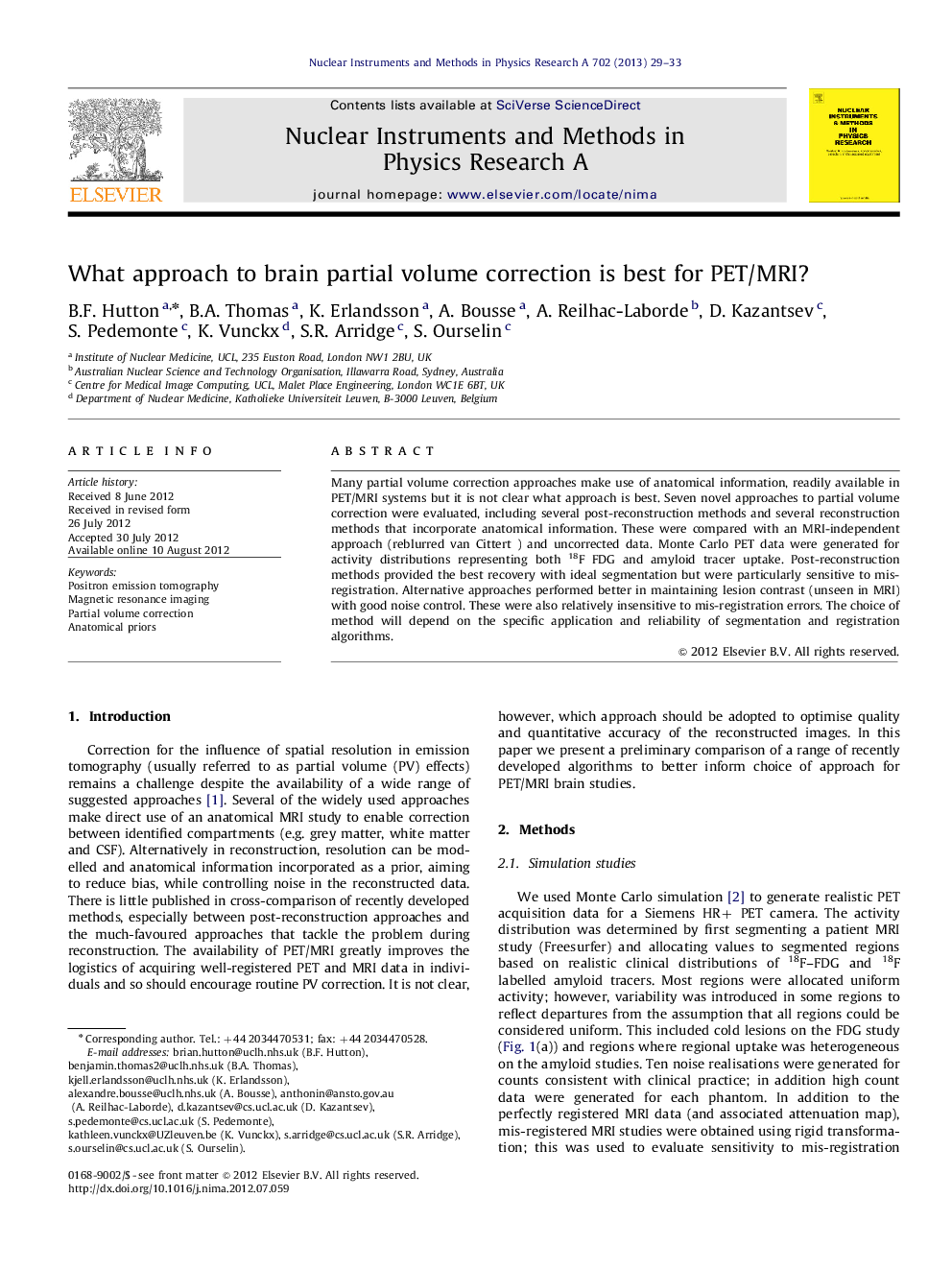| Article ID | Journal | Published Year | Pages | File Type |
|---|---|---|---|---|
| 8180209 | Nuclear Instruments and Methods in Physics Research Section A: Accelerators, Spectrometers, Detectors and Associated Equipment | 2013 | 5 Pages |
Abstract
Many partial volume correction approaches make use of anatomical information, readily available in PET/MRI systems but it is not clear what approach is best. Seven novel approaches to partial volume correction were evaluated, including several post-reconstruction methods and several reconstruction methods that incorporate anatomical information. These were compared with an MRI-independent approach (reblurred van Cittert ) and uncorrected data. Monte Carlo PET data were generated for activity distributions representing both 18F FDG and amyloid tracer uptake. Post-reconstruction methods provided the best recovery with ideal segmentation but were particularly sensitive to mis-registration. Alternative approaches performed better in maintaining lesion contrast (unseen in MRI) with good noise control. These were also relatively insensitive to mis-registration errors. The choice of method will depend on the specific application and reliability of segmentation and registration algorithms.
Related Topics
Physical Sciences and Engineering
Physics and Astronomy
Instrumentation
Authors
B.F. Hutton, B.A. Thomas, K. Erlandsson, A. Bousse, A. Reilhac-Laborde, D. Kazantsev, S. Pedemonte, K. Vunckx, S.R. Arridge, S. Ourselin,
